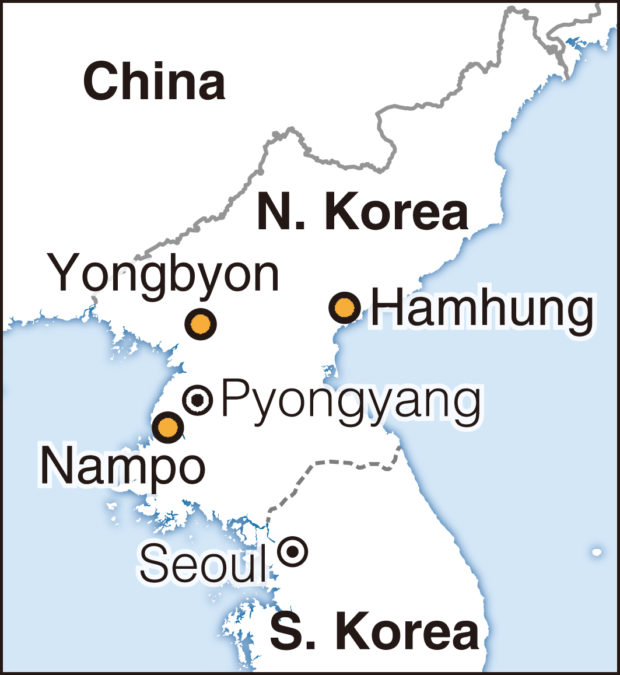
The Yomiuri Shimbun
TOKYO — Mike Pompeo accused North Korea of operating secret facilities for the enrichment of uranium when he met senior North Korean official Kim Yong Chol during his July 6-7 visit to the country.
The U.S. top diplomat’s move appears to underscore Washington’s increasing suspicion that Pyongyang is covertly proceeding with activities that are contrary to denuclearization, despite its declared commitment to the goal.
It also raises the possibility that even if North Korea starts the process of denuclearization, the alleged existence of secret facilities will become an issue during the declaration and verification phases.
According to sources knowledgeable about Japan-U.S.-South Korea trilateral talks, Pompeo said at his meeting with the vice chairman of the Workers’ Party of Korea that Pyongyang was enhancing the production of enriched uranium and also concealing nuclear-related facilities and nuclear warheads.
Citing information that construction activities are under way at a missile plant at Hamhung in the northeastern province of South Hamgyong to expand the facility, Pompeo stressed that this was not beneficial to U.S.-North Korean relations.
North denies allegation
Kim Yong Chol flatly denied Pompeo’s claim, according to the sources. Pyongyang has never hidden or operated a secret uranium enrichment site, the North Korean official was quoted as saying. Kim also reportedly argued that activities at the Hamhung missile plant were part of construction work in preparation for the rainy season, not expansion work.
On July 7, a North Korean foreign ministry spokesman released a statement accusing Washington of showing a “regrettable” attitude at the meeting between Pompeo and the North Korean official.
The actual state of North Korea’s production of enriched uranium has not been ascertained, except for a lone previously acknowledged facility at Yongbyon in the nation’s northwestern region. The existence of the Yongbyon enrichment site was disclosed to a U.S. nuclear expert in 2010.
Together with plutonium, highly enriched uranium is a key ingredient in the making of nuclear bombs.
The view is widely shared among U.S. experts that in addition to Yongbyon, North Korea has one or two covert uranium enrichment facilities. The Washington Post reported on June 30 that U.S. intelligence authorities had discovered the existence of a uranium enrichment facility called Kangson.
The facility is believed to have twice the enrichment capacity of Yongbyon, according to the report. Details on the facility are unknown, but there is a view that the name Kangson was taken from a place or facility near the Pyongyang suburb of Nampo in South Pyongan Province.
At the meeting, Pompeo may have asked about specific facilities based on intelligence.
U.S. patience ‘not unlimited’
The secretary of state pressed Kim Yong Chol to quickly implement denuclearization measures, saying Washington’s patience is not unlimited, according to the sources.
The Pyongyang official reportedly called for an early announcement of an end to the 1950-53 Korean War, refraining from presenting a road map for denuclearization while reiterating the intention to denuclearize.
Following his visit to North Korea, Pompeo reported the outcome from the meeting to U.S. President Donald Trump.
Asked by the president whether the U.S. should continue negotiations with Pyongyang or exert more pressure, Pompeo told him that it would take a while to reach a decision, according to the sources.